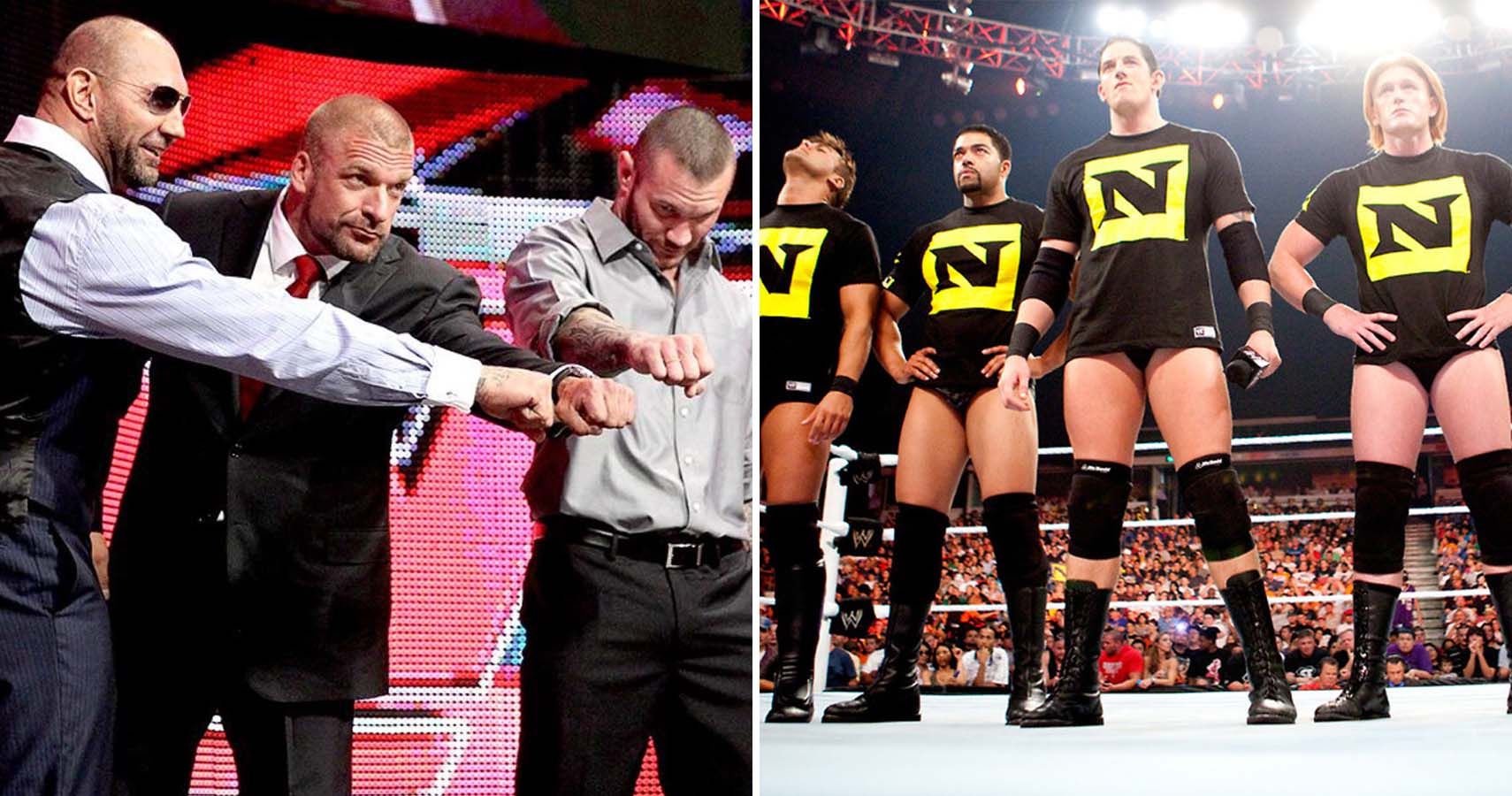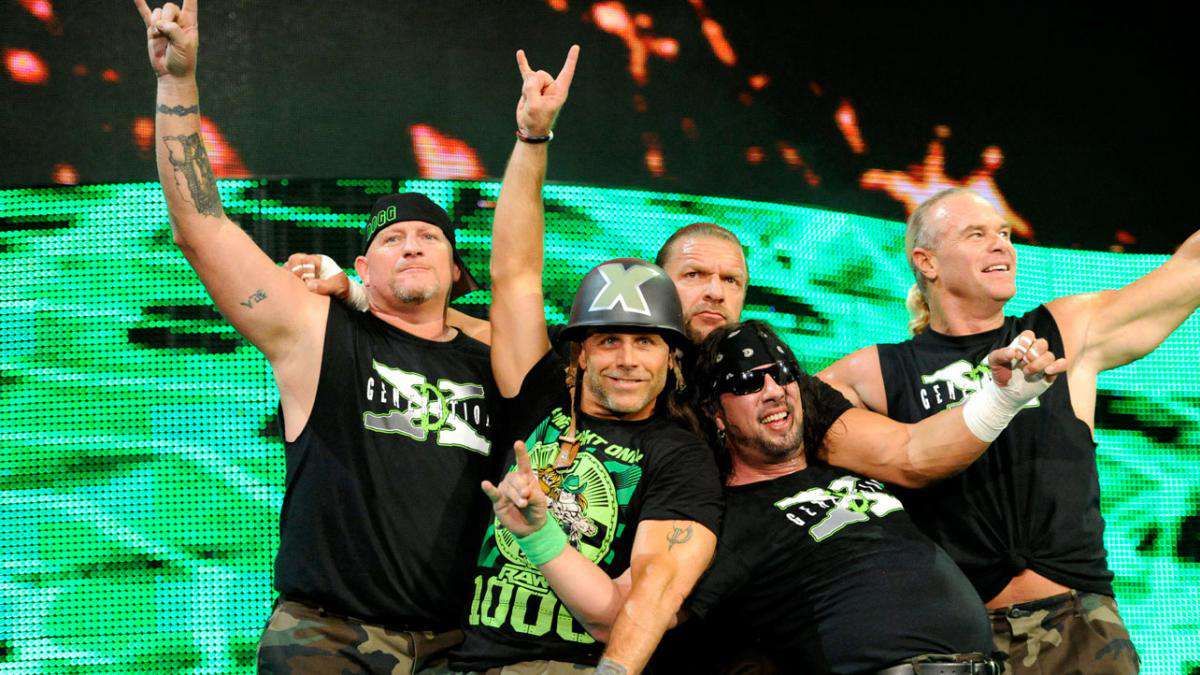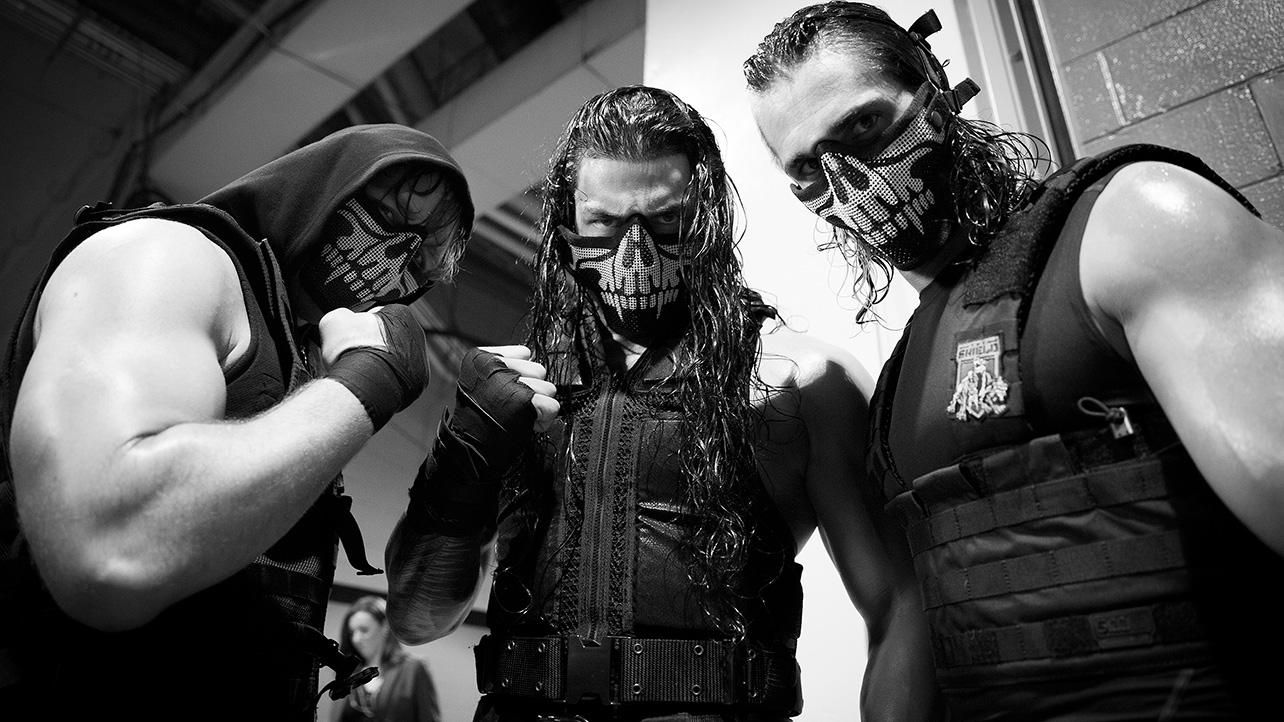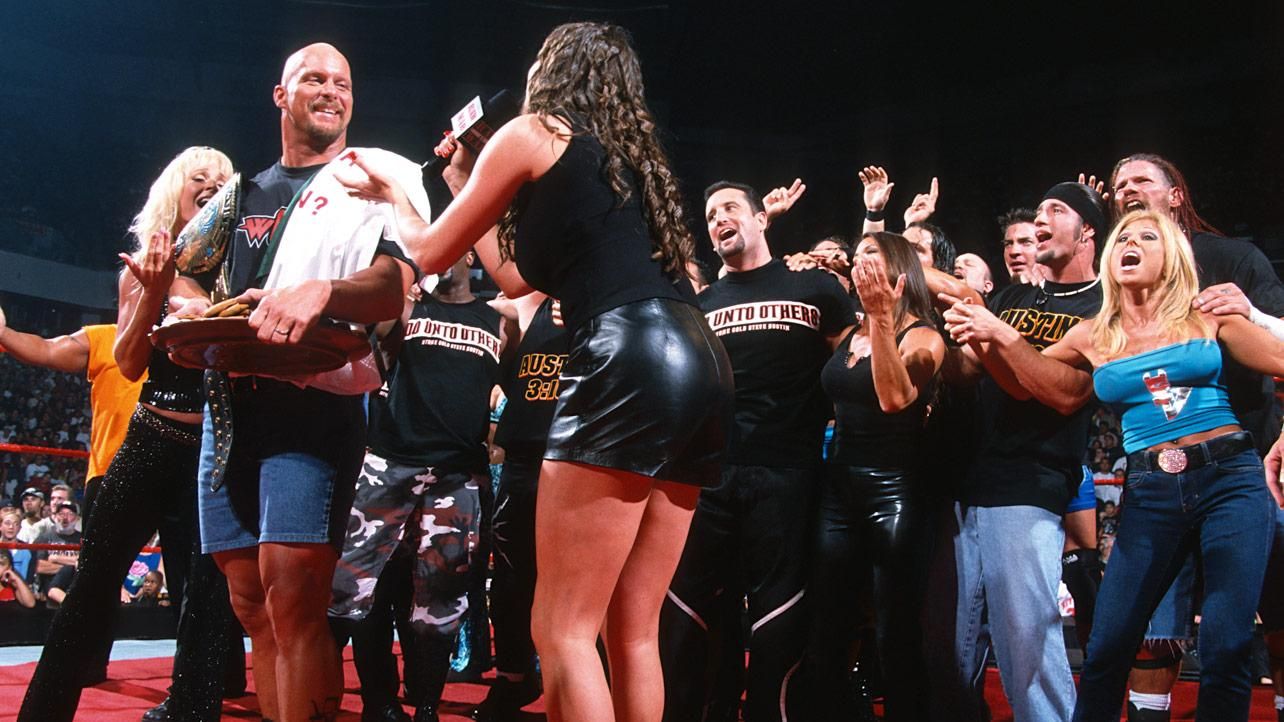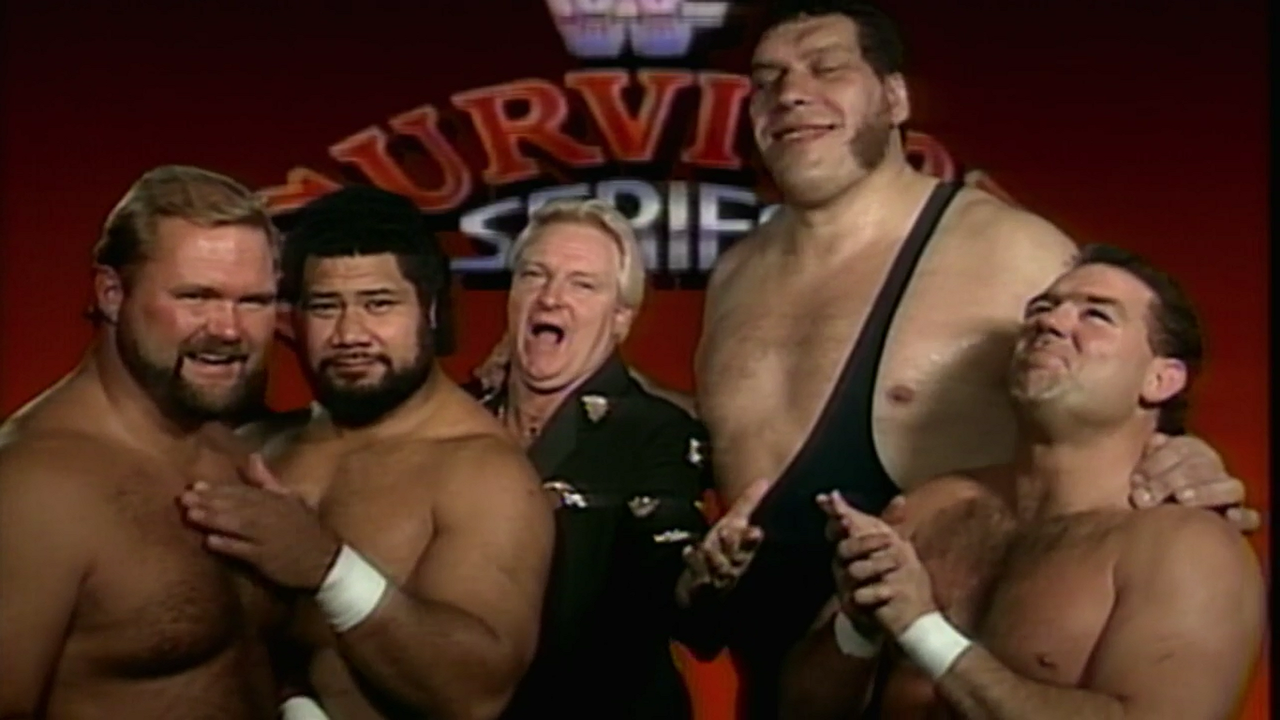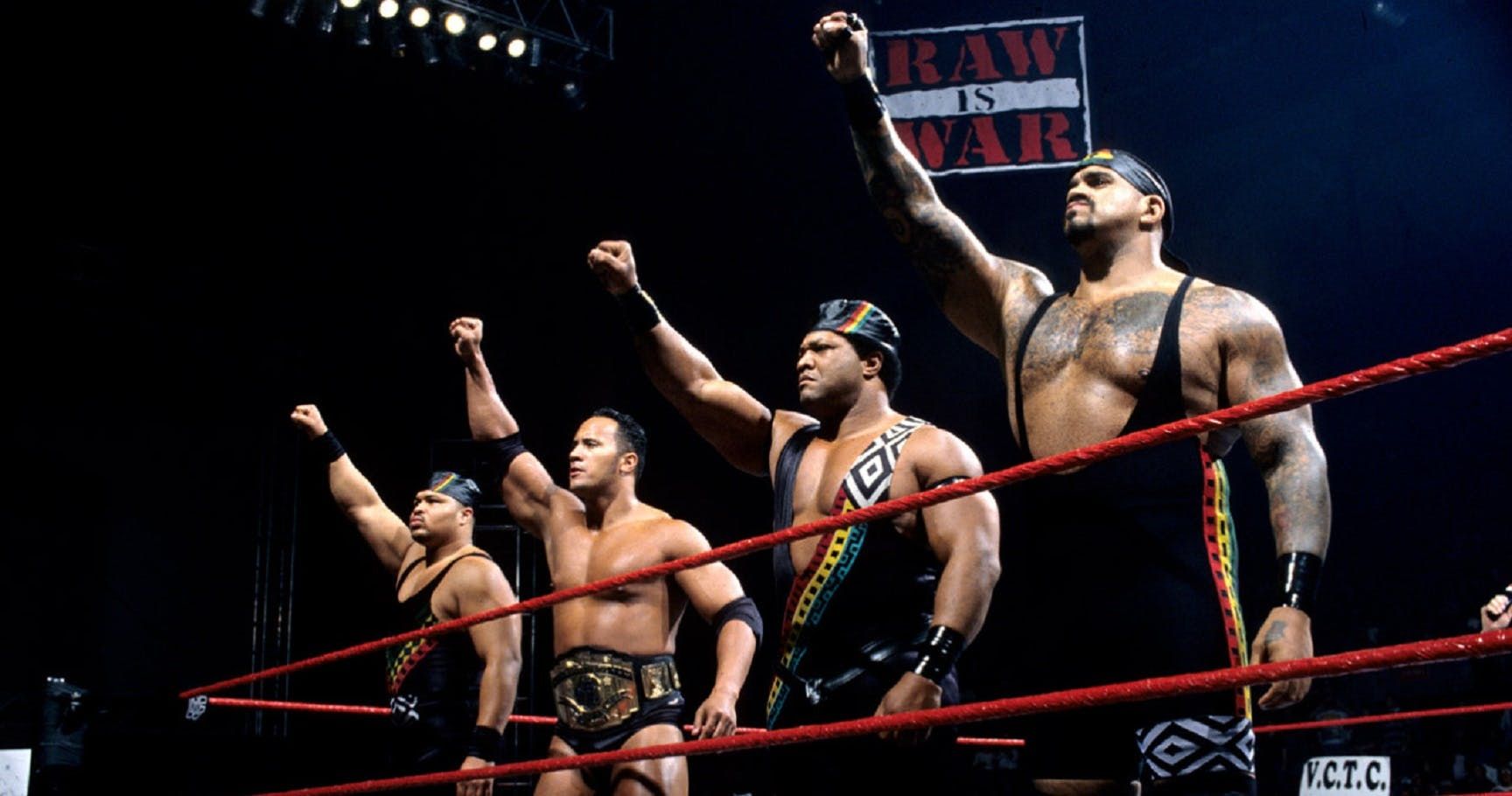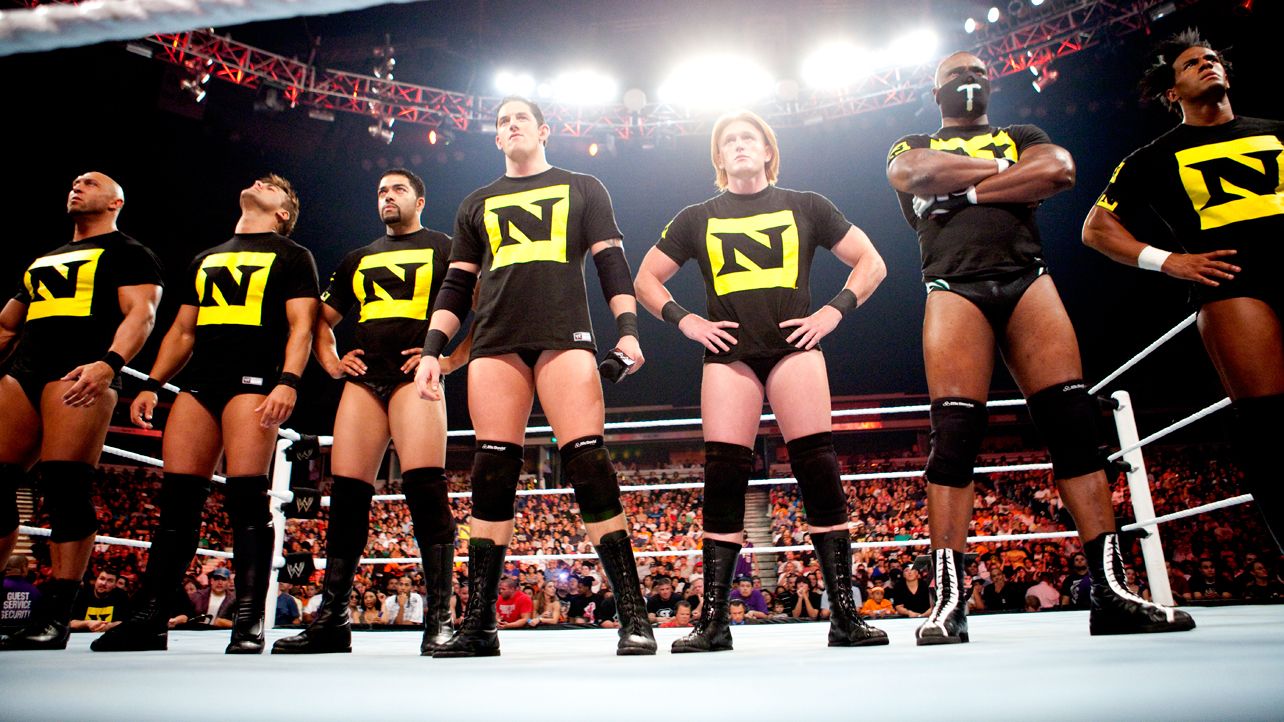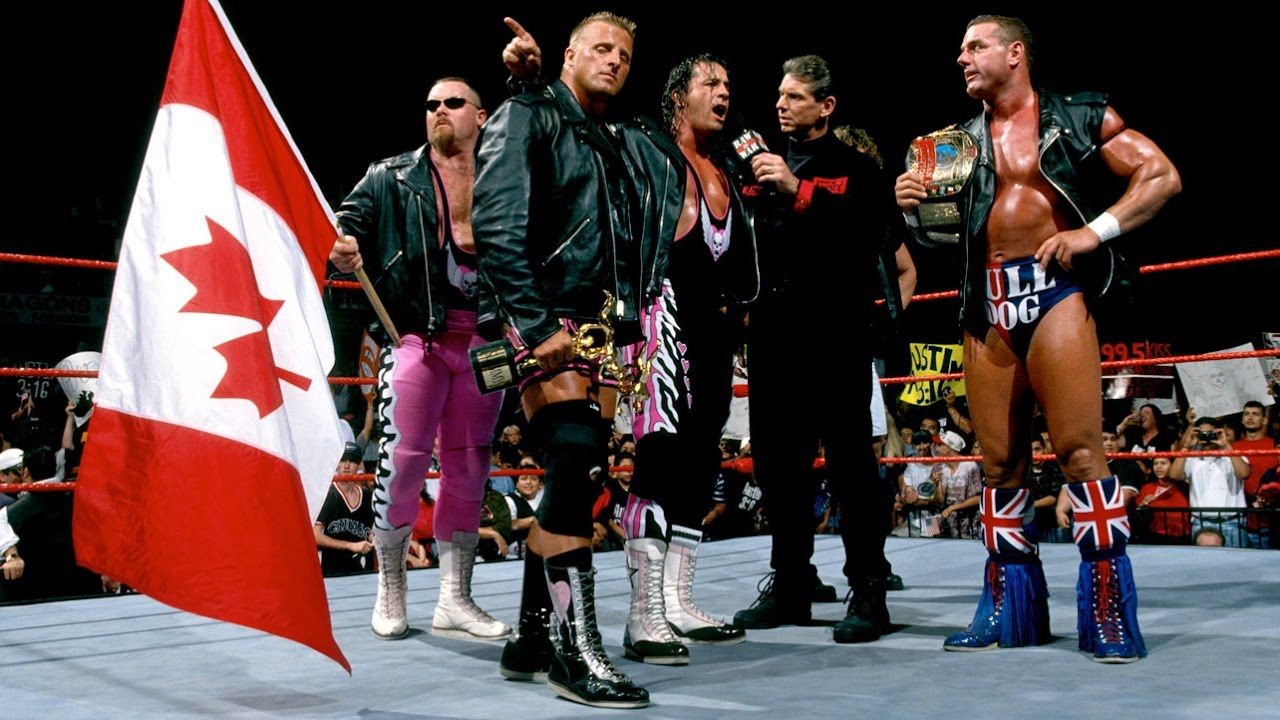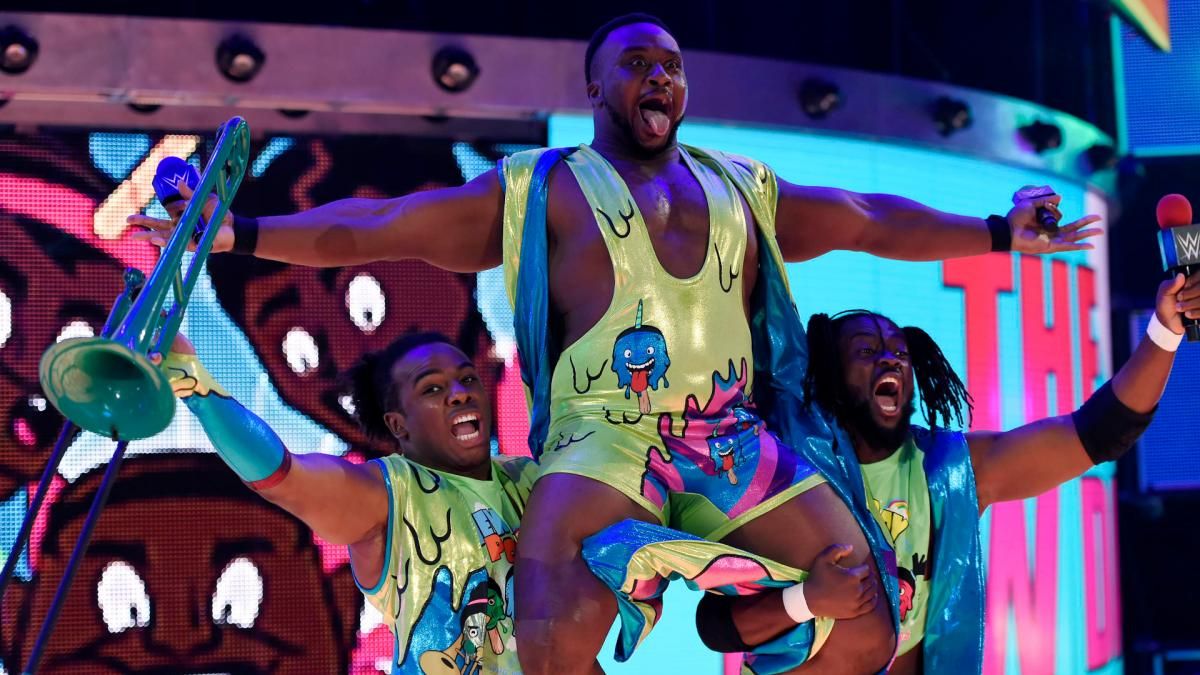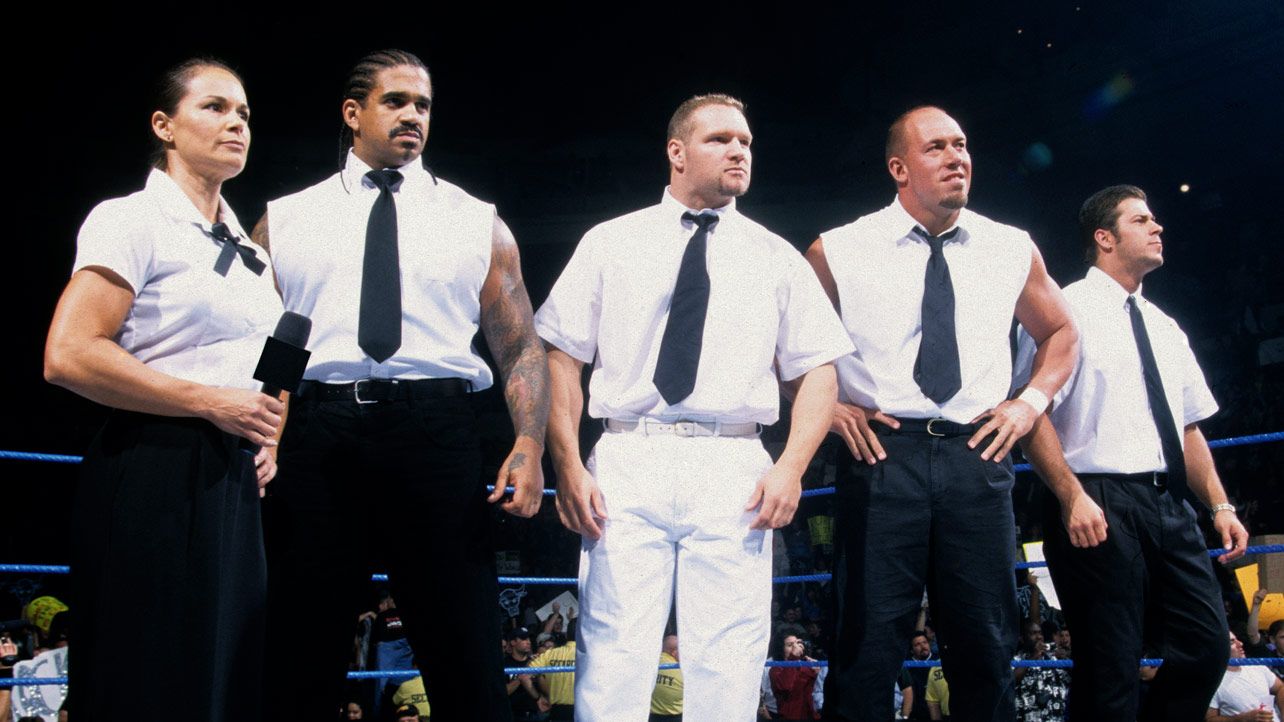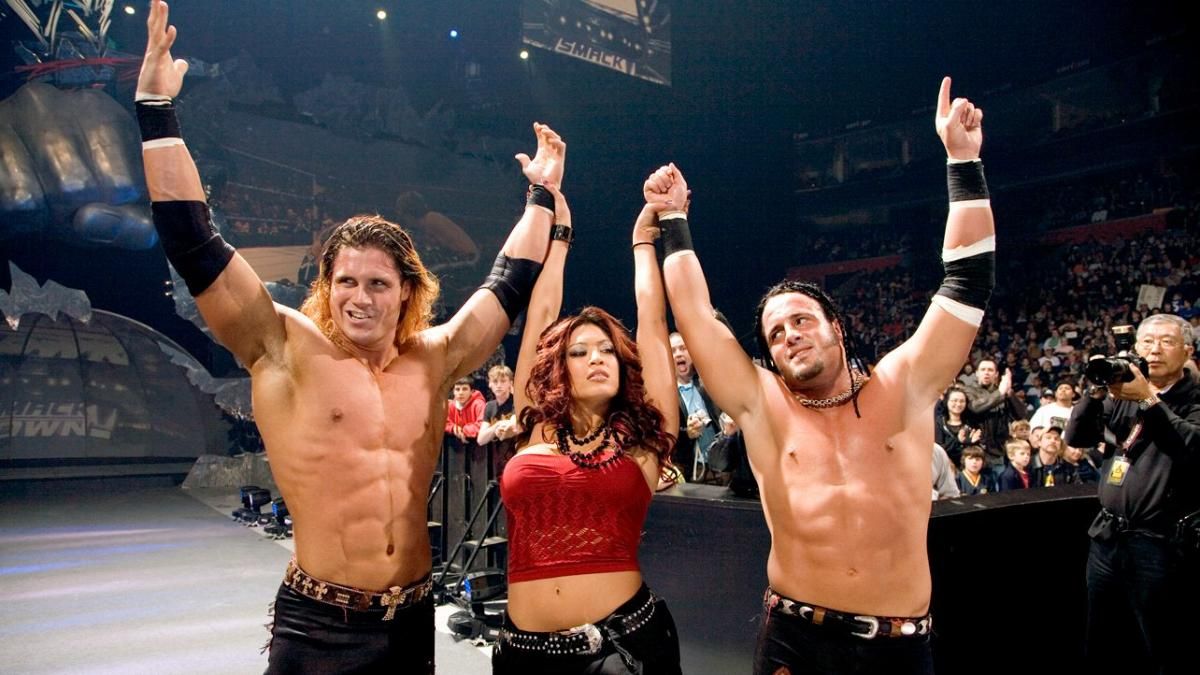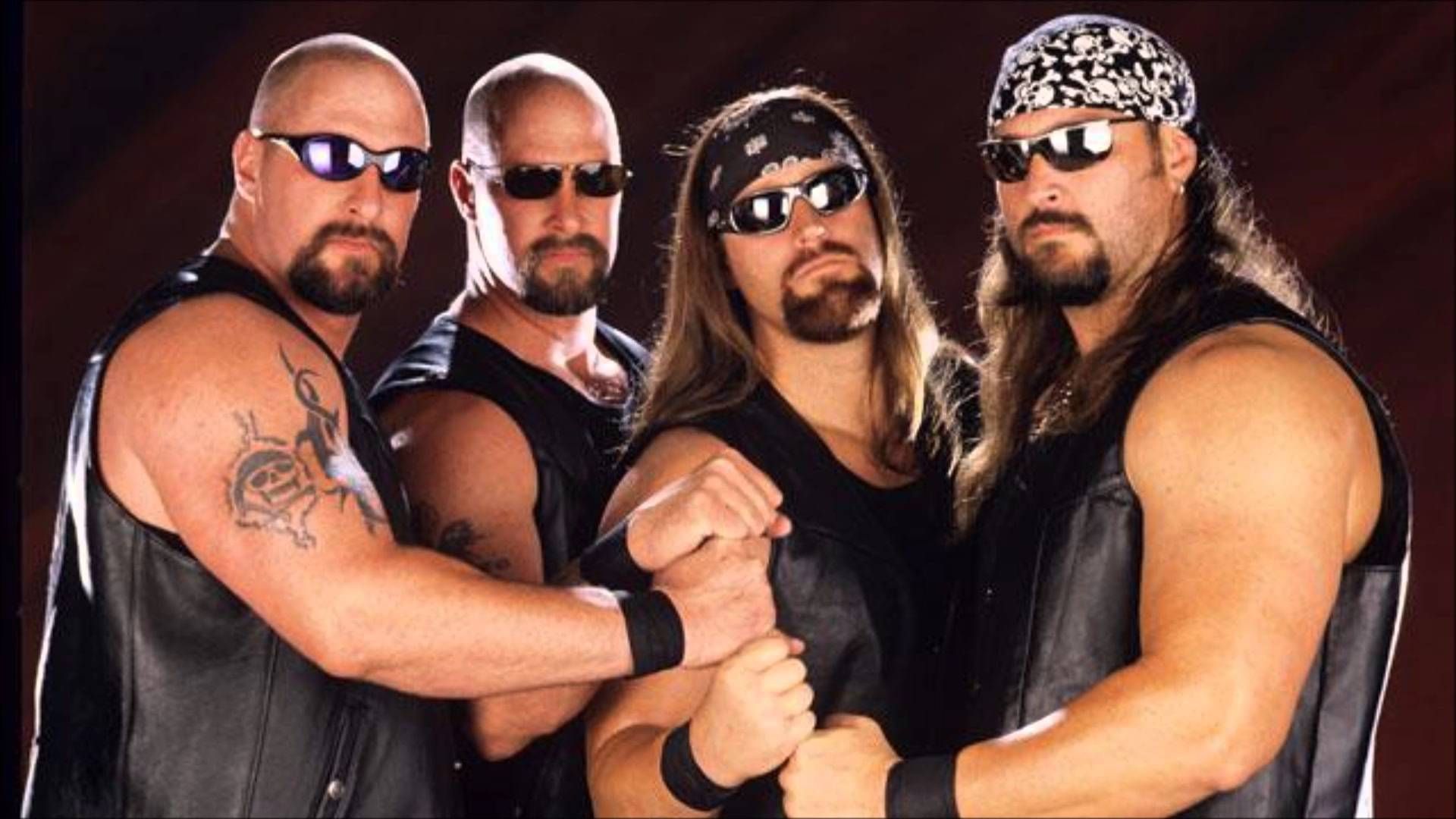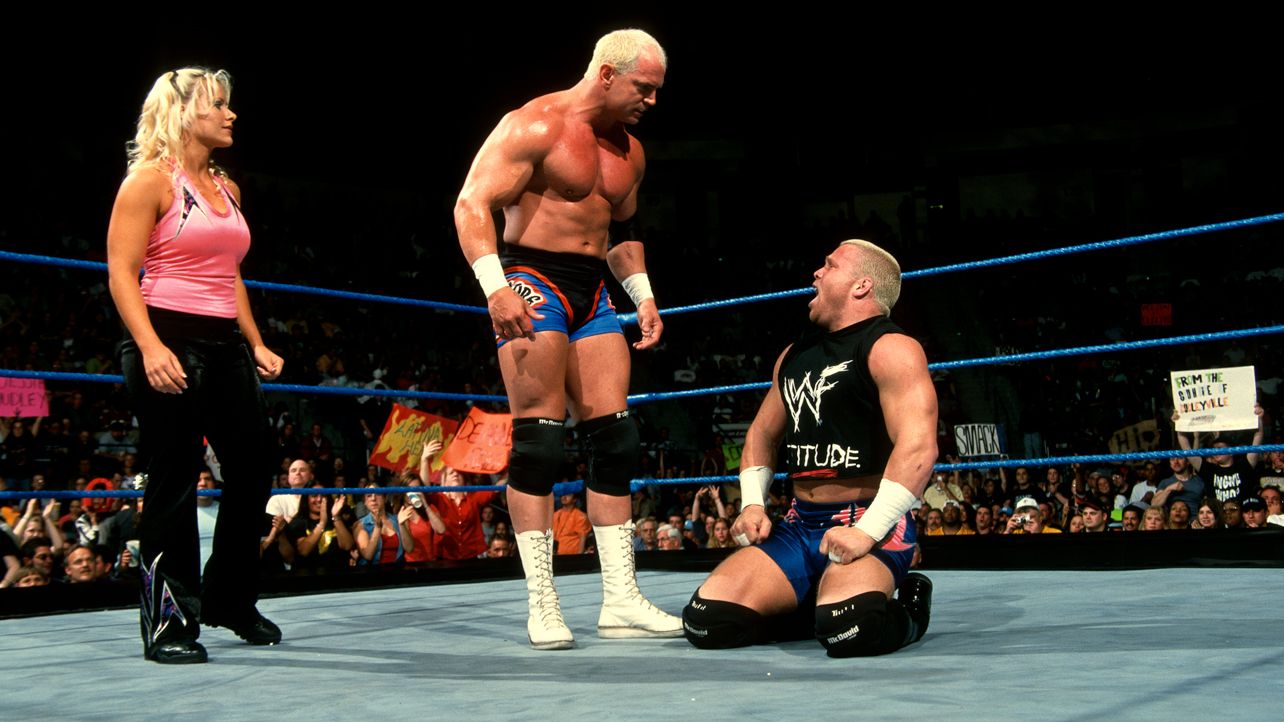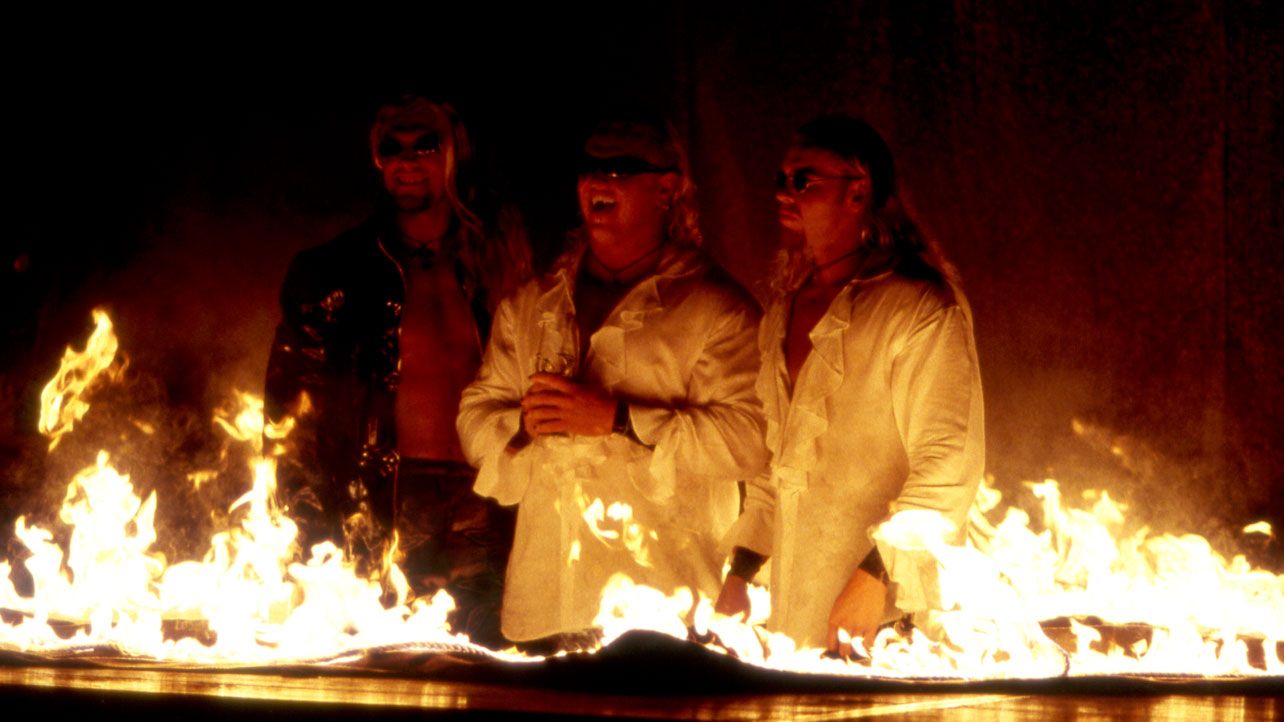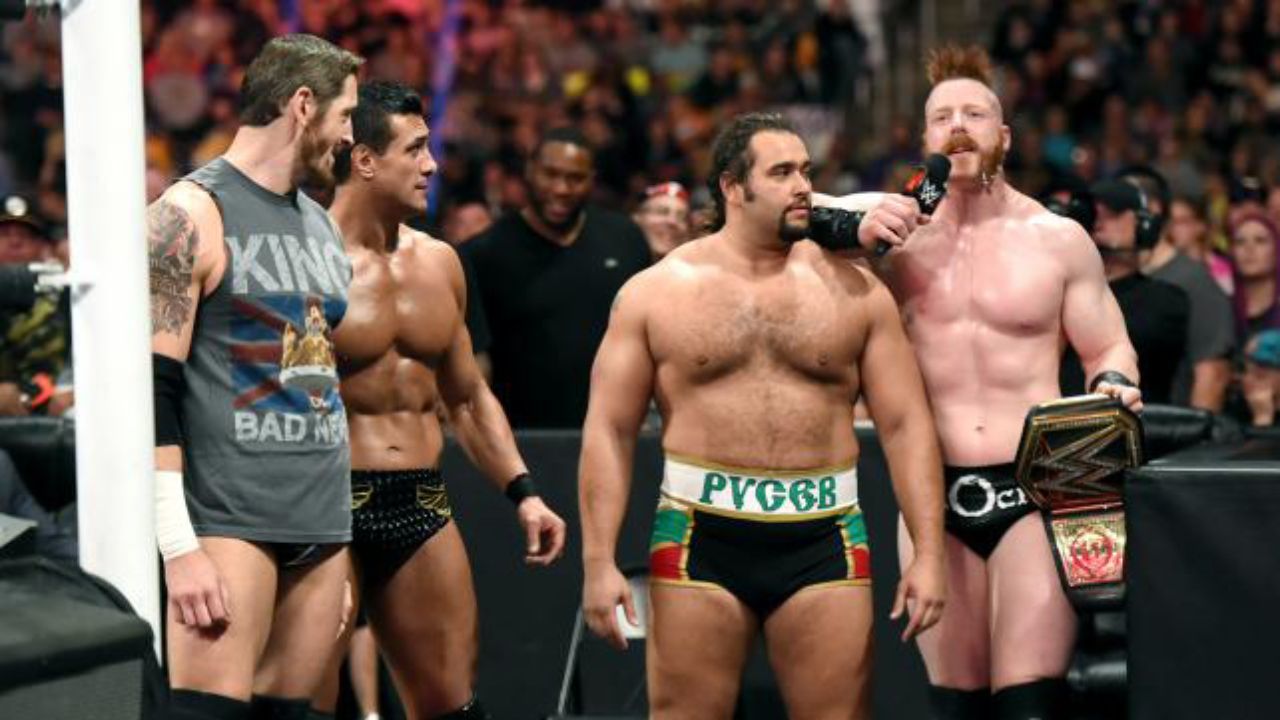Professional wrestling stables serve a number of purposes. On one hand, they can be built around a single star and used as a way to push that talent. Examples of that include CM Punk’s Straight Edge Society, which was a vehicle to explore a new angle on his lifestyle and cement him as a heel at the time. In other cases, a stable can be used to tell storylines, such as the intrigue associated with The Corporation and its revolving door of members. Still other stables are purposefully built to give younger stars the rub by being associated with more established stars. Take Zack Ryder and Curt Hawkins sitting under Edge’s learning tree during the La Familia angle.
Not all stables are created equally, though. While some are responsible for making performers’ careers, others have been known to cause some damage, either via certain talents getting overshadowed, or a stable taking a nosedive and everyone on board crashing with it.
Vince McMahon is widely rumored to be anti-stable, preferring that his stars be able to stand on their own, and gravitating more toward super tag teams like Rated RKO or Kevin Owens and Sami Zayn as opposed to full blown factions. Just the same, stables are enough of a staple of the business that they can’t be denied altogether, and there have been periods like the Attitude Era that were relatively stable heavy.
This article takes a look at ten WWE stables that legitimately made stars, and five that quite arguably ruined the careers of one or more members.
15 15. Made Stars: D-Generation X
D-Generation is probably the best known stable WWE has ever produced and with good reason. The group was at the vanguard of the Attitude Era, capitalizing on the real life entertaining dynamic between close friends Shawn Michaels and Triple H. Add in the unique spectacle of Chyna as a female heater and you have a cutting edge dynamic, featuring performers who could genuinely go in the ring. It’s the stable that put Chyna on the map, gave Rick Rude one of his last featured roles, pushed Triple H toward the top of the mid card, and shored up Shawn Michaels’s legacy during his first run.
The stable evolved, too. After WrestleMania XIV, it set up the foundation for Triple H’s ascent to the main event level and helped make X-Pac’s return feel like a bigger deal for being affiliated with the group. The New Age Outlaws were a popular tag team act, but it was a huge mutual benefit for them to join the crew, too.
In the end, everyone affiliated with D-Generation X solidified him or herself as someone with Hall of Fame credentials. That’s, in no small part, a credit to the group itself.
14 14. Made Stars: The Shield
The Shield have emerged as the quintessential example of how WWE can push new stars via their involvement with one another and not necessarily having a veteran in their midst. The group debuted by taking out Ryback to help CM Punk retain his WWE Championship. Contrary to some rumors at the time (and, according to Punk, the original plan), they weren’t Punk’s backup, but rather hired guns who operated autonomously. Thus, the WWE audience was introduced to Roman Reigns, Seth Rollins, and Dean Ambrose as The Shield.
The Shield got over based less on individual members picking up wins of significance than their teamwork allowing them to gang up on established stars for coordinate attacks, and for them to win the resulting six-man tag matches. After a year and a half as a unit, the guys were established to make a go of it as singles stars. It’s telling that their reunion, just three and a half years later, felt like a dream team coming back together.
13 13. Ruined: The Alliance
When WWE bought out WCW, not to mention ECW, it seemed as though the company would be able to run wild assembling all manner of dream matches fans never thought they’d see. It seemed reasonably logical for WWE to cast the opposing rosters against one another, rather than sending everyone out as individuals. Putting the WCW and ECW alumni on the same side as The Alliance muddied the waters. The companies were, in terms of corporate structure and public identity, largely opposites.
Unfortunately, coming out of The Alliance, no one really felt like a star. You can argue it was a vehicle to get Steve Austin’s heel character as their leader. All of the actual stars coming out of WCW or ECW, however, like Booker T and Diamond Dallas Page, left the angle worse for wear after losing repeatedly to WWE’s top stars and being relegated to background roles.
12 12. Made Stars: The Heenan Family
WWE doesn’t have as long of a history of stables as some other wrestling promotions. Historically, the promotion depended more on having heel managers represent a cluster of talents. The Heenan Family was largely this style of group, but did have enough crossovers between members over the years to feel like a stable, and to get over a variety of talent.
Bobby Heenan was key to the group and its component stars’ success. As a manager he was associated with the main event talents who challenged Hulk Hogan at the time, and as such, guys like The Islanders, Rick Rude, The Brain Busters, and Mr. Perfect all got a nice bump through affiliation with him (and each other). On top of that, Heenan was a such a good mouthpiece that he helped get over anyone associated with him. Even a talent like Andre the Giant, who didn’t necessarily need help getting over, felt like a more complete act for Heenan cutting promos on his behalf.
11 11. Made Stars: The Nation of Domination
The Nation of Domination is that rare WWE stable that, without question, got over and built legitimate stars, but hasn’t been revisited in reunion angles or much retrospective fanfare. Some of that has to do with the racial overtones of the group. As WWE embraced Attitude, they didn’t make any bones about the group identifying as a black faction (though other successful members included Owen Hart, Crush, and Savio Vega to name a few). In addition, it’s a group that was largely overshadowed by its most successful alum, The Rock.
The Rock became one of the biggest wrestling stars of all time, and arguably the most successful crossover talent after making his way to Hollywood. It’s interesting to note, in looking back, how essential the Nation was to getting him over. The Rock’s heel turn allowed him to communicate his one of a kind personality. Having a faction that he was aligned with gave him serious backing. Additionally, while Steve Austin had Vince McMahon as an authority to buck against, The Rock had Faarooq as the veteran leader of the group for him to disrespect and ultimately unseat for the top spot.
10 10. Ruined: The Nexus
In theory, The Nexus was a bold idea with a lot of potential. Cluster seven (or eight) new talents together and let them run wild, ganging up on more established stars. In a sense, it was beta-version of The Shield. Unfortunately, the group neither had break out talents of The Shield’s caliber, nor was booked to win consistently enough to really get over as a faction.
So, while The Nexus started out red hot in the summer of 2010, the group lost momentum heading into the fall. By early 2011, the group had been reconfigured with CM Punk as a veteran at the fore, but it was too little too late to really salvage the group. It's telling that, seven years later, the only talents from the stable still affiliated with WWE are Heath Slater (hanging by a thread) and David Otunga as a broadcaster whose job may be on the line due to recent domestic violence claims.
9 9. Made Stars: The Hart Foundation
In 1997, the unthinkable happened when Bret Hart realigned with his wayward family members Owen Hart, Davey Boy Smith, and Jim Neidhart, and collectively emerged as a heel super group. Add Brian Pillman to the proceedings and you had a faction with a ton of talent and an unpredictable edge.
While The Hart Foundation didn’t necessarily make stars, per se, it gave this crew of veterans direction and purpose. Bret Hart went from a beloved veteran to the hottest heel in the company. Owen and Bulldog went from mid-card frenemies, to more focused top henchmen in a super group. Neidhart probably wouldn’t have found work with WWE were it not for being the quintessential fall guy for this squad. Working as a group allowed Pillman to take a back seat for in ring work while his body healed from assorted ailments, and he could mostly be a talker. This short lived faction thrived for its time together and was incredibly important in the fledgling days of Attitude.
8 8. Made Stars: The New Day
In Kofi Kingston, Big E, and Xavier Woods, WWE had three very talented guys with little to no direction between them. Kingston had thrived as a mid card champion and teased ascending up the card in a program with Randy Orton. He’d stalled out, though, and looked like he’d ride the mid-card treadmill indefinitely until his body gave out and he lost his ability to execute the high flying style that was his signature.
The New Day—making a three man unit out of these talents—got off to a rough start in the early going as cheesy, feel good faces. A heel turn though, and embracing the gimmick that they were all about positivity despite cheating constantly made these guys absolutely thrive. They’re that rare act that got so over as heels that WWE had little choice but to subtly turn them face. They stuck to the loud and largely obnoxious antics that had gotten them over and have now been one of WWE’s hottest acts for over two years.
7 7. Ruined: Right To Censor
Right To Censor seemed like a fun enough idea for a stable. The concept was to band together a bunch of notable mid card talents, and cast them as heels playing sanitized versions of their most popular gimmicks. They naturally garnered heat by taking away the versions of these wresters fans most wanted to see. Moreover they allowed WWE to simultaneously poke fun at the network and corporate sponsors asking them to tone things down, while actually complying with their directive.
The trouble is that some of RTC’s most over talents—most notably Val Venis and The Godfather—were over not in spite of, but because of their outlandish gimmicks as a porn star and a pimp, respectively. WWE actually would revisit these characters for these performers down the road, but it was too little too late as they squandered their momentum, and the tail end of their prime as in ring performers.
6 6. Made Stars: Evolution
Rarely has a stable launched with a more explicit mission of making stars than Evolution. The group featured legend Ric Flair and reigning World Heavyweight Champion and preeminent heel headliner Triple H. Their partners were young Randy Orton and Batista, blue chip prospects that WWE added to the stable to both help them get over, and position them under Flair and Helmesley’s learning tree.
The project was a success, as Orton ascended to main event status himself with the group. The angle of Evolution turning on him, and Orton turning face didn’t go over so well. Nonetheless, he garnered the push he needed to remain at the least, the upper card level, if not the main event level for over a decade to follow. Batista enjoyed all the more growth under the Evolution banner before he more successfully split from the stable. The Animal won the 2005 Royal Rumble and went on to turn face and defeat Triple H in the main event of WrestleMania 21. So it was that not one, but two main eventers of that generation rose out of Evolution.
5 5. Made Stars: MNM
While mostly remembered as a tag team, it’s noteworthy that MNM actually had three members— Joey Mercury, Johnny Nitro, and Melina. While Nitro and Mercury were talented prospects, had they debuted under a more generic gimmick, it’s possible they’d be forgotten like most of the tag teams of their era. MNM, however, offered all three a sexy Hollywood glamour gimmick, complete with a red carpet entrance.
This small faction introduced Melina, who would in time become one of the best established stars on WWE’s women’s roster. Johnny Nitro would become John Morrison, an upper mid card mainstay for several years. While Joey Mercury never really got the spotlight for himself, he was a respected mechanic and wrestling mind. He’d go on to thrive as a bit of a poor man’s Arn Anderson, backing CM Punk in the Straight Edge Society, and later Seth Rollins as part of J&J Security. Ironically, despite his resume appearing the least impressive at first blush, Mercury actually hung with WWE longer than either of his fellow MNM alumni.
4 4. Ruined: The Disciples Of Apocalypse
Amidst the Attitude Era, WWE decided to really push the envelope with The Nation of Domination in making them an all black stable, and having established members Savio Vega and Crush break off to form their own rival gangs. While 'gang war' had its moments, and was memorable for the unique brand of violent chaos it engendered, it didn’t result in many good matches, and the resulting new factions didn’t accomplish much of note.
The Disciples of Apocalypse—Crush’s gang of white bikers—felt like a token acknowledgment for Crush’s years of service. The problem is, particularly by that point, Crush wasn’t over enough to justify leading a meaningful stable, and his group with Brian Lee and the Harris Brothers made no meaningful impact on the WWE landscape.
3 3. Made Stars: The Holly Cousins
The trio of Hardcore, Crash, and Molly Holly—kayfabe cousins—was a fun enough concept. The boys shared a hardcore sensibility and their in fighting was a regular source of entertainment, as were their absurd persistent claims at being super heavyweights. Molly was the glue to keep them together.
One of the truest measures of successful stable is where the component pieces started and where they wound up. This band of cousins served the important purpose of giving all three of these workers clear identities. Despite a long tenure, Hardcore was probably never more fun or memorable as a WWE Superstar than in this era. Crash might have otherwise been a forgettable cruiserweight, but instead emerged as The Houdini of Hardcore. Molly would arguably enjoy the greatest success of all. After a successful run with her cousins, she was an established name. From there, she turned heel, became more serious, and became a fixture in the women’s title scene for years to follow.
2 2. Made Stars: The Brood
At the time, you couldn’t help thinking that stable centered on a mid card vampire could only go so far. While the group’s leader, Gangrel, never did make much of a career for himself in WWE, it’s remarkable to think of what his side kicks would go on to accomplish.
The original Brood saw Gangrel teamed with Edge and Christian. The angle offered them exposure and saw them get mixed up with top talents like The Undertaker for the Brood’s on and off alliance with the Ministry of Darkness. The second version of the group would feature Gangrel with The Hardy Boyz. So it was that this stable furthered the careers of two of the greatest tag teams in wrestling history, not to mention three guys who won world titles in WWE (and you can arguably say four, depending on how you gauge Matt Hardy winning the ECW Championship). Edge is the only Brood alumni in the Hall of Fame so far, but you have to assume Christian will follow him in time. The Hardys are likely Hall of Fame bound, too, though, for now, they’re active parts of the WWE roster again, and so induction is probably in the distant future.
1 1. Ruined: The League Of Nations
The League of Nations made a certain kind of old school wrestling sense. Here, the WWE had a number of talented wrestlers each with a good luck, each of whom happened to be from outside the US. What better route could there be than to put them together in a stable that celebrated their status as foreigners and played on the fan base’s jingoistic tendencies. If you were to look at the group’s track record on paper, you might even call them a success for Sheamus winning a WWE Championship under the group’s banner, and the faction defeating New Day in a six-man tag at WrestleMania.
Unfortunately, the group’s legacy was far less successful than their resume might suggest. They were largely directionless, and failed to garner much heat. On the whole, the foursome felt like what they were—Sheamus, Wade Barrett, Rusev, and Alberto Del rio being given something to do in the absence of any real plans for them. It’s telling that, in the aftermath to their big win at WrestleMania, they were promptly taken apart by a crew of returning legends, and broke up soon after. Del Rio and Barrett would be gone from the company within a few short months, and Rusev has largely floundered ever since. Only Sheamus succeeded in the aftermath, but that was only after reinventing himself in a tag team with Cesaro.

